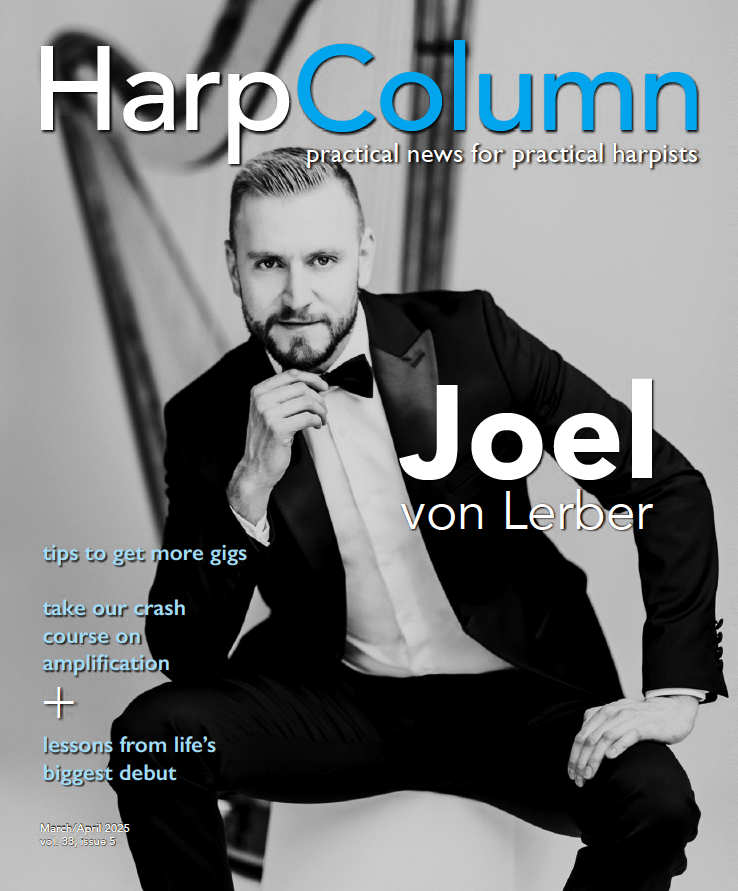Home › Forums › Coffee Break › learning Piano after harp?
- This topic has 46 replies, 17 voices, and was last updated 13 years, 2 months ago by
Saul Davis Zlatkovski.
-
AuthorPosts
-
November 9, 2010 at 12:44 pm #104478
deb-l
Participantafter having a ‘discussion’ with my son who proved me wrong, the pan pipes were the ancestor of the piano, because it was the first keyed instrument.
November 9, 2010 at 4:49 pm #104479william-weber
ParticipantDeb, the pan pipes are the ancestor of the organ, but how are they are any closer in ancestry to the keyed bridge harps than the harp, which evolved from the bow, itself originally a hunting weapon? I don’t see how an aerophone evolved or descended into a chordophone. Bones not hollow enough to give a good tone may first have been percussion instruments.
OTOH, keyboards and playing actions themselves likely did evolve from the organ. To quote a famous organ tutorial recording:
“Thousands of years ago the organ had its beginning in a primitive
flute, or whistle, fashioned from a hollow stick. Flutes were set
side-by-side, panpipe fashion, so that a melody could be played. A
hollow skin was added as wind reservoir, and the result was an organ,
for this complicated instrument is little more than an assortment of
pipes, a supply of air, and keyboards for control. … The organ is the oldest of keyboard instruments.”November 9, 2010 at 6:48 pm #104480sherry-lenox
ParticipantLittle confused about that one myself. The pan pipes are part of the insignia of my music fraternity, and I couldn’t see the connection…..
November 9, 2010 at 7:30 pm #104481patricia-jaeger
MemberThe piano was “born” from the harp. I took a picture of a harp with the keyboard growing out of it, which is in a German museum. Later after that strange instrument, the harp part became horizontal, was surrounded by wood, and after a few other developments, became the “grand piano” model used today.
November 9, 2010 at 8:33 pm #104482kreig-kitts
MemberI was curious why this thread was still going, then peeked in and whoah, it’s gone on to all kinds of cool stuff.
As far as keyboard instruments, the organ predates the harpsichord and piano quite a bit, with the ancient Greeks making water-powered organs from the first couple centuries AD. Ancient architect Vitruvius, who was born
November 9, 2010 at 9:12 pm #104483deb-l
ParticipantI think he got that the pan pipes were the earliest piano because
they came before organs, which came before piano’s, at least according
to this article.November 9, 2010 at 9:29 pm #104484kreig-kitts
MemberThere’s a semantic question then, and what is the essential part of a piano. Specific aspects of the modern piano, such as keys
November 9, 2010 at 9:31 pm #104485kreig-kitts
MemberOr, of course, that definition
November 9, 2010 at 11:56 pm #104486Rachel Redman
ParticipantIf you
November 10, 2010 at 12:34 pm #104487deb-l
ParticipantKreig, I’ve always thought people who have a beautiful voice to have the best instrument.
September 30, 2011 at 6:31 am #104488Stephen Conor
ParticipantIt is a bit hard to learn piano after harp. And I find it true, the spacing is wider so when trying to play one, you’ll really need to focus. In our piano classes, I guess I am the only one having a hard time learning. But it’s fun.
November 9, 2011 at 4:21 pm #104489Billy Jones
ParticipantI really wanted to learn a couple of other instruments after harp but I guess I am not a full blown musician just yet who would five into anything that comes my way.
Before the harp, I was playing a little keyboards and the guitar, which is pretty basic actually.
November 27, 2011 at 3:56 pm #104490Julietta Anne Rabens
ParticipantI started in piano and moved to harp. There are a number of parallels between the instruments including reading the grand staff, coordinating the two hands, and responding to spacing and pressure. If you have played one then your neuromuscular system has developed to respond to fine motor control which will aid in learning the other instrument.
I primarily perform on harp, but teach both harp and piano. One issue for maintaining a high level is keeping up with both repertoires. There are also some physical requirements that necessitate the ability to switch between two sets of internalized, automatic responses for each instrument. The use of the wrist is fundamentally different between the two instruments with far more motions, rotations, and angles used for piano. The wrist is far more stable for harp, and I have found in working with students or in my own playing the need to consciously switch gears. The piano uses circular motions and a variety of releases that lead with the wrist. Another difference is that the harp requires more strength and stability in each of the joints in the hands. It develops the musculature that controls the fingertip joints and the base joint of the thumb to a much higher level than the piano requires, although both instruments use gently curved fingertips. The concept of outer balance in the hand is also different since piano playing uses the curvature of the hand to create the outer balance between thumb and fifth finger. Much work and practice creates independence between fingers 4 and 5. The outer balance for
November 29, 2011 at 3:18 am #104491Stephen Conor
ParticipantI find Patricia’s reply very helpful. How to play on piano while learning harp is a bit hard for me. The fingering seems confusing when you would play from one of the instruments. But it is really great learning these two instruments.
December 13, 2011 at 4:58 am #104492Stephen Conor
ParticipantWell like any stringed instrument, if combined when learning lessons for piano, may take some time for anyone could play it well. These two instruments, may somehow give you a hard time since both are different from each other, but once you get the hang of it, it’ll get easy then.
-
AuthorPosts
- You must be logged in to reply to this topic.





